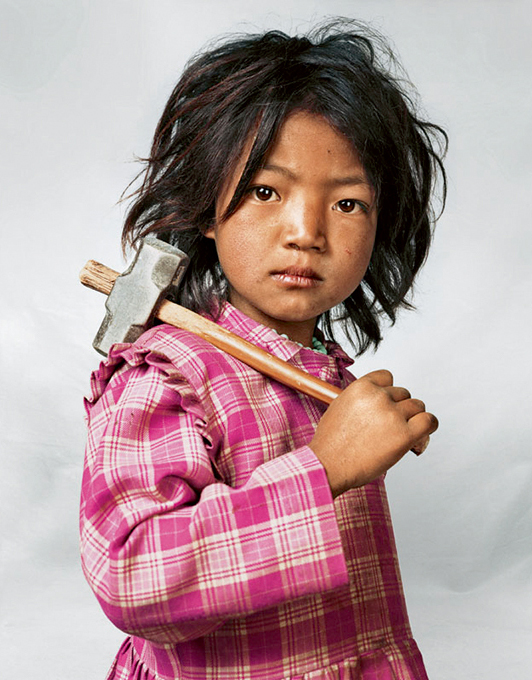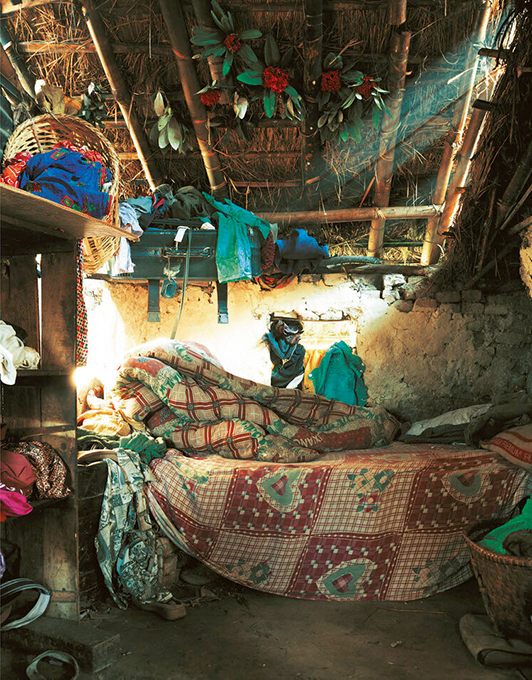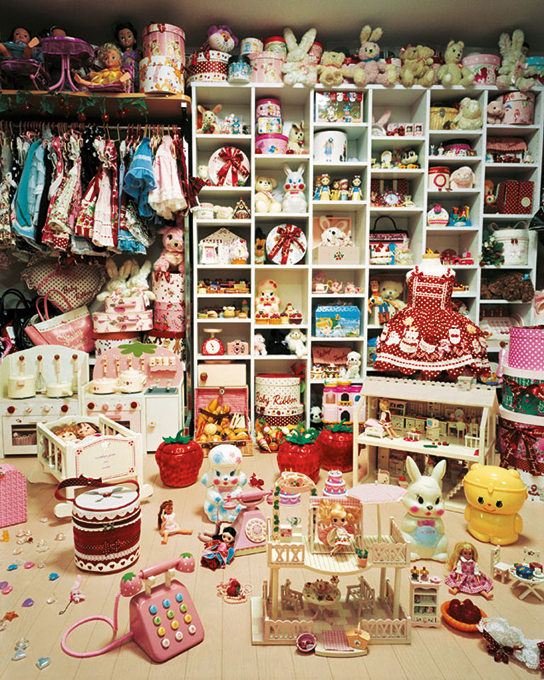

Indira lives with her parents, brother and sister near Kathmandu in Nepal. Her house has only one room, with one bed and one mattress. At bedtime, the children share the mattress on the floor. Indira is seven years old and has worked at the local granite quarry since she was three.
Kaya is four years old. She lives with her parents in a small apartment in Tokyo, Japan. … Kaya’s bedroom is every little girl’s dream. It is lined from floor to ceiling with clothes and dolls. Kaya’s mother makes all Kaya’s dresses – up to three a month, usually.
Indira and Kaya, along with 54 other kids and teenagers around the world, are featured in Where Children Sleep, a beautifully executed photobook published in 2010. One side of each spread contains a full-page image of a child’s sleeping place, whereas the other side includes a portrait of the child and a vignette that provides a closer look at the child’s background, living conditions and expectations for the future.
For children, the bedroom is their kingdom, a place where they dream, play, and sometimes cry. When documentary photographer James Mollison embarked on a project about children’s rights, he reflected on his own childhood and realised that his bedroom said much about it. With that in mind, he spent several years travelling the world, from the streets of Rio de Janeiro to a top-floor apartment on Fifth Avenue in New York, taking some eye-opening photographs of children and their bedrooms.
The difference between the sleeping spaces of these children could not be more striking under Mollison’s lens. Some kids have abundant toys with which to play and a comfortable bed to lie on at night, while others have to share a mattress with other family members in the open or sleep outdoors with a herd of goats. For example, Harrison, a little boy from New Jersey, has an en suite room, a racing car bed and a big screen television. In Phnom Penh, Cambodia, Roathy lives with his family on a rubbish dump on the outskirts of the city. His bedroom—if it can be called a bedroom at all—is no more than a couple of discarded tyres with flies buzzing around.
An incredible array of children and teenagers from all corners of the globe and all social strata gaze at us from these pages. Where adults see misery and bleakness, children, by virtue of their innocence, see hope and possibilities. The conditions of their bedrooms might be way different, yet their dreams can be very much similar. For instance, many of them want to be a doctor or a teacher. Erlen, a 14-year-old mother-to-be from a slum in Brazil, pregnant for the third time, shares the same dream of being a vet with Harrison from New Jersey. Both Indira, the seven-year-old quarry worker, and Maria, a 12-year-old private school student living in a three-storey house in Mexico City, aspire to be a dancer.
Dreams know no boundaries, but the harsh reality does. Where Children Sleep demonstrates, in a simple but compelling way, how children’s well-being and the opportunities for fulfilling their dreams are affected by ethnic and cultural backgrounds, family situations or access to basic necessities. As an insightful photographic essay on poverty, social class and human rights, the book is written and designed as a prompt for children to empathise with the lives of their peers across the globe. Mollison writes in the introduction, “I hope this book will help children think about inequality, within and between societies around the world, and perhaps start to figure out how, in their own lives, they may respond.”
Thirteen years after its publication, one cannot help wondering how lives have turned out for these children. How many of them are working towards their dreams? And how many of them are simply struggling to survive? The answers may hinge on how readers, children and adults alike, have responded to the issues raised in the book.
















